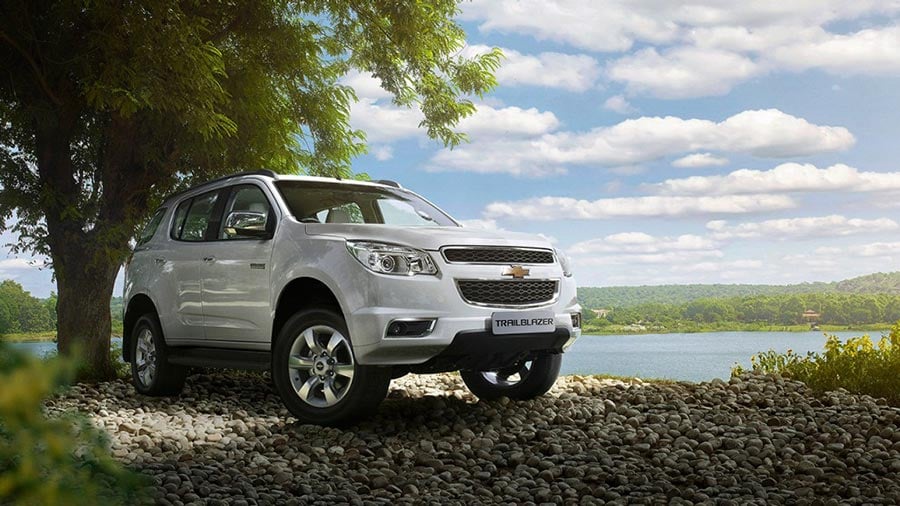
Driving during rains is Bad says Mumbaikars: Chevrolet India survey
With the arrival of monsoon, maintenance of cars becomes a big concern for all the vehicle owners. Drive safely and slowly is advised by all the beloved ones around us. Maintain distance while driving, follow signals, be careful on the slopes and potholes are some of the key safety tips to be followed on the roads especially in Mumbai which is the commercial capital of India.
Chevrolet recently commissioned a study on road accidents in Mumbai, conducted by Nielsen and ValueNotes, as per which ‘Driving during rains’ is considered as one of the worst driving scenarios by 50% of the respondents, followed by driving in the dark/night (22%). South zone has the lowest number of road accidents between January 2014 and April 2016. 35% consider ‘defective road conditions like wet/slippery roads’ as the main cause of accidents, followed by fault of the driver of the other vehicle (26%). The top three common concerns faced by the respondents during rains are poor road conditions like potholes, open manholes, slippery road etc. (65%), over speeding or rash driving (63%) and drink and drive (54%).
Below are the top accident prone areas from each zone with the number of accidents:

We commissioned this study on road accidents in Mumbai in association with Nielsen and ValueNotes with an aim to create awareness amongst the people and bring about change on Road Safety. As a global brand that considers safety one its highest priorities, Chevrolet takes a comprehensive and innovative approach to road safety aimed at keeping everyone on the road – drivers, passengers and pedestrians – safe.
said, Jack Uppal, VP Marketing and Customer Care, General Motors.
The DCP (Traffic HQ), Worli, says,
It is important to remember that roads are dynamic environments i.e. there can be new speed-breakers or pot-holes at different spots on different days, including pedestrian interferences. Hence even on familiar routes, drivers should be very cautious while driving, especially during monsoon. Eastern express highway and western express highway are more prone to accidents in the rains.
Chevrolet India survey gathered some of the most relevant information on the reasons for road accidents in monsoon, what steps has been taken by traffic police to reduce accidents and the survey also helped us understand what traffic police expects from the private companies to reduce road accidents in Mumbai.
Top reasons for road accidents in the wet season:
- Drivers not being able to adjust to the changed road conditions especially during the first few showers
- Inability to see potholes due to water-logging leads to loss of control over the vehicle
- Bad-road conditions
- Low visibility of road signs
Steps taken by traffic police to reduce accidents in Mumbai:
- Correcting the engineering of roads; for example in cases where the turns are too narrow; repairing potholes; cleaning of oil spill and gravel on roads after the first rains on major accident-prone places
- Adding speed-breakers and signals on wide long roads where speeding is common
- Resurfacing or rebuilding roads which have become too smooth or slippery due to overuse
- Regularly setting up blockades to penalize traffic–rule offenders and installing relevant signage and boards on all roads
How can private citizens/companies help reduce road accidents in Mumbai?
- Private companies can repaint the road discipline lines and repair various traffic-rule boards
- Acting as traffic wardens; in other words, learning to manage road traffic like the traffic police
- Use various mediums like pamphlets, videos and list of actions, to educate people about following traffic rules
- Manage travel times effectively so that there is no hurry to reach a destination
Chevrolet’s objective is to raise awareness among motorists to maintain their cars during the rains. Chevrolet also provides a special quick free check-up of items such as brakes, light bulbs, electrical, battery and tyres during the monsoon service camp. There are also discounts on parts and labour charges which helps the Chevrolet drivers to keep their cars up to the mark and service them on time to drive safe during monsoon.
All of the above mentioned data is a compilation of the primary and secondary research with Nielsen and ValueNotes respectively.
Below are the methodologies used by both the research companies:
Nielsen research methodology
The methodology used by Nielsen was online Survey – a web based questionnaire that the target audience can complete on their own (CAWI – self-administered). In order to meet the target respondent (i.e., those who met with an accident in last 3 years in Mumbai during monsoon), we targeted bike and car owners in Mumbai (assuming an incident rate of 10-20%). This helped us in funnelling those respondents who had met with accidents in Monsoon and accordingly collect the required research information from them. Out of 1,269 people we contacted, 504 qualified our target definition. This activity took 10 working days.
ValueNotes research methodology
ValueNotes analysed the annual and monthly data of registered road accidents in Mumbai that was gathered from the city’s traffic police. The objective was to find the high accident-prone areas and also trends that had taken place over the years – whether there had been an increase (or a decrease) in the number of accidents, and if the nature of accidents or the types of vehicles involved were different. To establish the top-10 accident hot-spots in Mumbai, we interviewed senior police and traffic officials. We also asked their suggestions on how the number of accidents could be reduced.







